 W
WAdalvard the Elder was a German clergyman. He was first the dean of Bremen, but he was sent to the diocese of Skara in Sweden, as bishop during the early 1060s. Adam of Bremen wrote well of him, and tells that he made missionary attempts in Värmland. In Skara Cathedral a chalice was found with the inscription Adalwardus Peccator. He was succeeded by Adalvard the Younger.
 W
WAdelaide, Abbess of Vilich, also known as Adelheid, was the abbess of Vilich and also of St. Maria im Kapitol in Cologne; she was declared a saint post mortem. After her death she was remembered for the miracles that were ascribed to her. Her parents were Megingoz, count of Guelders, and Gerberga, who was a descendant of German king Henry the Fowler. They were also the founders of the convent at Vilich. The main source for her life is the hagriographical work Vita Adelheidis.
 W
WAdelaide II, a member of the Salian dynasty, was Abbess of Gandersheim from 1061 and Abbess of Quedlinburg from 1063 until her death.
 W
WAdelaide I, a member of the royal Ottonian dynasty was the second Princess-abbess of Quedlinburg from 999, and Abbess of Gernrode from 1014, and Abbess of Gandersheim from 1039 until her death, as well as a highly influential kingmaker of medieval Germany.
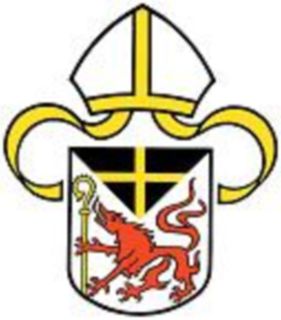 W
WAltmann von Passau, often called Saint or Blessed Altmann, was a Roman Catholic bishop who lived in the 11th century. He was an important representative of the Gregorian reforms, Bishop of the diocese of Passau, monastery founder and reformer. He is venerated as a saint, but not officially canonised.
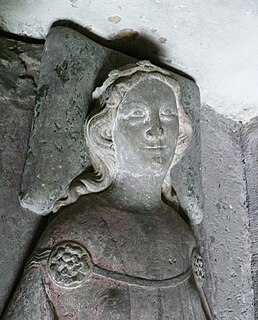 W
WSaint Aurelia of Regensburg, also known as Aurelia of Ratisbon, is an 11th-century Roman Catholic German saint.
 W
WBernard II was the Duke of Saxony between 1011 and 1059, the third of the Billung dynasty as a son of Bernard I and Hildegard. Besides his position in Saxony, he had the rights of a count in Frisia.
 W
WGisela of Burgundy, a member of the royal Elder House of Welf, was Duchess of Bavaria from about 972 to 976 and again from 985 to 995, by her marriage with Duke Henry the Wrangler. She was the mother of Emperor Henry II.
 W
WBurkhard I, Count of Zollern is considered the first well-documented ancestor of the Hohenzollern dynasty. Because of his name, it has been attempted to link the Hohenzollern family's descent to the medieval Burchardings family, but without success. His father may have been Friedrich, a count in the Sülichgau area. His mother may have been Irmentrud, the daughter of Count Burkhard of Nellenburg.
 W
WConrad I [of Abenberg] was Archbishop of Salzburg, Austria, in the first half of the 12th century.
 W
WFriedrich I, Count of Zollern, was often cited as a powerful Swabian Count and supporter of the imperial party of Henry V, Holy Roman Emperor.
 W
WGerberga II, was the daughter of Henry I of Bavaria and his wife Judith, and a niece of Emperor Otto I. She was Abbess of Gandersheim from 956 to 1001 and personally instructed dramatist and poet Hrosvit of Gandersheim. Under Gerberga's rule, Gandersheim Abbey served as an Ottonian center of cultural, spiritual, and intellectual life.
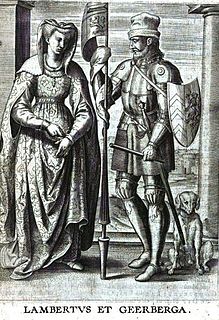 W
WGerberga of Lower Lorraine (975-1019), Countess of Louvain, was the daughter of Charles, Duke of Lower Lorraine, himself the son of Louis IV of France and Gerberga of Saxony. Her mother was Adelaide/Agnes de Vermandois.
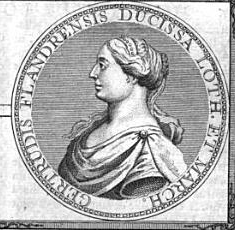 W
WGertrude of Flanders, was a Countess of Louvain and Landgravine of Brabant by marriage to Henry III, Count of Leuven, and a Duchess of Lorraine by marriage to Theodoric II, Duke of Lorraine. At the time the duchy was the upper Lorraine, since 959 separated from the duchy of Lower Lorraine.
 W
WGertrude of Saxony, also known as Gertrude Billung, was a countess of Holland by marriage to Floris I, Count of Holland, and countess of Flanders by marriage to Robert I, Count of Flanders. She was regent of Holland in 1061-1067 during the minority of her son Dirk V, and regent of Flanders during the absence of her spouse in 1086-1093.
 W
WGisela of Hungary was the first queen consort of Hungary by marriage to Stephen I of Hungary, and the sister of Henry II, Holy Roman Emperor. She has been beatified by the Roman Catholic Church.
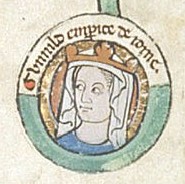 W
WGunhilda of Denmark, a member of the House of Knýtlinga, was Queen consort of Germany by her marriage with King Henry III of the Salian dynasty from 1036 until her death.
 W
WHacheza of Ballenstedt was a member of the House of Ascania, and the third abbess of Gernrode (r.1044-1063).
 W
WHemma of Gurk, also called Emma of Gurk, was a noblewoman and founder of several churches and monasteries in the Duchy of Carinthia. Buried at Gurk Cathedral since 1174, she was beatified on 21 November 1287 and canonised on 5 January 1938 by Pope Pius XI. Her feast day is 27 June. Hemma is venerated as a saint by both the Catholic Church and the Eastern Orthodox Church, and as patroness of the current Austrian state of Carinthia.
 W
WHenry IX, called the Black, a member of the House of Welf, was Duke of Bavaria from 1120 to 1126.
 W
WHeribert of Cologne, also known as Saint Heribert, was a German Roman Catholic prelate who served as the Archbishop of Cologne from 999 until his death. He also served as the Chancellor for the Emperor Otto III since 994. He also collaborated with Henry II, Holy Roman Emperor with whom relations were strained though were strengthened over time.
 W
WHerman II, a member of the Ezzonid dynasty, was Archbishop of Cologne from 1036 until his death.
 W
WIda of Austria was a Margravine of Austria by marriage to Leopold II of Austria. She was a crusader, participating in the Crusade of 1101 with her own army.
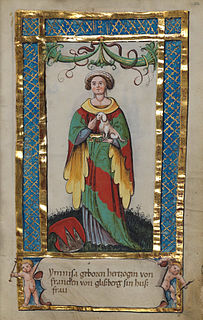 W
WImiza of Luxembourg, was a German noblewoman. She was the daughter of Frederick of Luxembourg, and the wife of Welf II of Swabia.
 W
WJudith of Flanders was, by her successive marriages to Tostig Godwinson and Welf I, Countess of Northumbria and Duchess of Bavaria.
 W
WKunigunde of Altdorf was a member of the Swabian line of the Elder House of Welf. She was also the ancestress of the younger House of Guelph, a cadet branch of the House of Este.
 W
WSaint Leopold III, known as Leopold the Good, was the Margrave of Austria from 1095 to his death in 1136. He was a member of the House of Babenberg. He was canonized on 6 January 1485 and became the patron saint of Austria, Lower Austria, Upper Austria, and Vienna. His feast day is 15 November.
 W
WLouis the Springer, sometimes called Louis the Jumper or Louis the Leaper, was a German nobleman and count in Thuringia from 1056 until his death. Little is known about him, although he is mentioned in many legends.
 W
WMatilda of Franconia was a daughter of Emperor Conrad II and Gisela of Swabia from the Salian dynasty. Matilda’s elder brother was Henry III, Holy Roman Emperor.
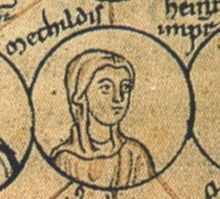 W
WMatilda of Germany or Matilde of Saxony was the third daughter of Otto II, Holy Roman Emperor and his wife, Empress Theophanu.
 W
WMeinhard I, an ancestor of the noble House of Gorizia, was ruling count of Gorizia from 1122 until his death. He also held the offices of a Count palatine in the Duchy of Carinthia as well as Vogt governor of the Patriarchate of Aquileia and of St Peter Abbey in the March of Istria.
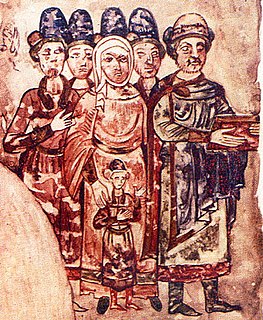 W
WOda of Stade was a German noblewoman, who was the daughter of Ida of Elsdorf. Through marriage to Sviatoslav II of Kiev, she became a Grand Princess consort of Kievan Rus'.
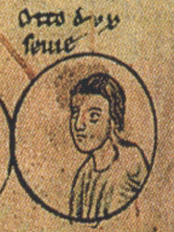 W
WOtto II, a member of the Ezzonid dynasty, was Count Palatine of Lotharingia from 1034 until 1045 and Duke of Swabia from 1045 until his death.
 W
WRichenza of Northeim was Duchess of Saxony from 1106, Queen of Germany from 1125 and Holy Roman Empress from 1133 as the wife of Lothair of Supplinburg.
 W
WUta von Ballenstedt, a member of the House of Ascania, was Margravine of Meissen from 1038 until 1046, the wife of Margrave Eckard II. She is also called Uta of Naumburg as the subject of a famous donor portrait by the Naumburg Master.
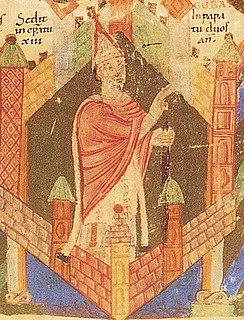 W
WPope Victor II, born Gebhard of Dollnstein-Hirschberg, was the head of the Catholic Church and ruler of the Papal States from 13 April 1055 until his death in 1057. Victor II was one of a series of German-born popes who led Gregorian Reform.
 W
WWelf II was a Swabian count and a member of the Elder House of Welf.
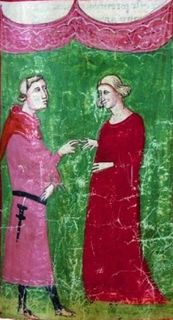 W
WWelf II, or Welfhard, called Welf the Fat (pinguis), was Duke of Bavaria from 1101 until his death. In the Welf genealogy, he is counted as Welf V.
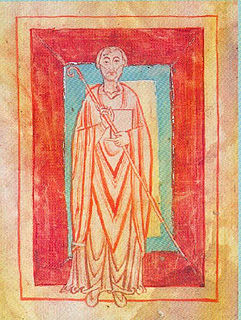 W
WWilliam of Hirsau was a Benedictine abbot and monastic reformer. He was abbot of Hirsau Abbey, for whom he created the Constitutiones Hirsaugienses, based on the uses of Cluny, and was the father of the Hirsau Reforms, which influenced many Benedictine monasteries in Germany. He supported the papacy in the Investiture Controversy. In the Roman Catholic Church, he is a Blessed, the second of three steps toward recognition as a saint.
 W
WWulfhilde Billung of Saxony was the eldest daughter of Magnus, Duke of Saxony and his wife, Sophia of Hungary.